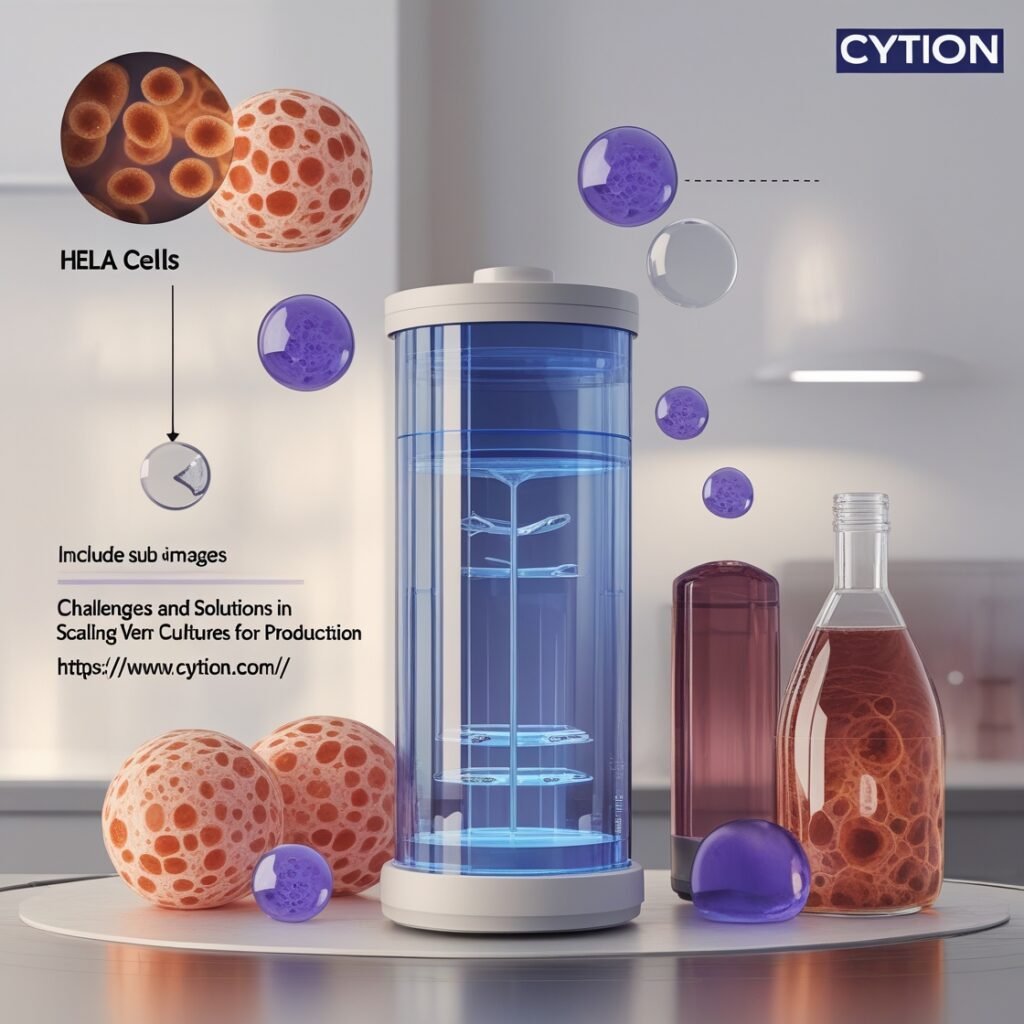What You Need to Know
- VERO cells come from the kidney of an African green monkey, established in 1962.
- They are mainly used in virus propagation, making them vital in vaccine development.
- Scaling VERO cell cultures presents unique challenges due to their anchorage-dependent nature.
- Innovative solutions include optimizing growth conditions and using microcarrier technology.
Cell lines are crucial in biomedical research, acting as the backbone for studies related to health and disease. Among these, VERO cells shine due to their unique properties and applications in virology and oncology research. Understanding the challenges in scaling VERO cell cultures for production, along with innovative solutions, is essential for progress.
VERO Cell Characteristics and Applications
VERO cells are derived from the kidney of an African green monkey and were established in 1962. They double in number approximately every 24 hours under ideal conditions. These cells are primarily used in virus propagation, which makes them indispensable in vaccine development and toxin screening. Their adaptability and reliability contribute significantly to their widespread use in research labs globally.
Challenges in Scaling VERO Cell Cultures
Scaling VERO cell cultures presents unique challenges due to their anchorage-dependent nature. This means they cannot be grown in suspension, complicating large-scale production processes. Researchers must maintain specific culture conditions to ensure optimal growth, which can be resource-intensive and lead to variability in production yields. Additionally, the need for specialized equipment and environmental control can strain research budgets and timelines. Recognizing these challenges is crucial for finding effective solutions.
Optimizing Growth Conditions for Large-Scale Production
The growth of VERO cells is heavily influenced by environmental factors. Maintaining a humidified incubator at 37°C with 5% CO2 is vital. Specialized media and supplements can enhance VERO cell growth, allowing researchers to significantly improve cell yield and viability. Implementing strict monitoring protocols ensures these conditions are met consistently, reducing the risk of culture failure.
Microcarrier Technology for VERO Cell Culture
Microcarrier technology has emerged as an effective solution for VERO cell, sh-sy5y bioprocessing, promoting higher cell densities and enhancing efficiency in virus production. This technology allows cells to attach to small beads, facilitating easier handling and scalability. By using microcarriers, researchers can maximize the surface area for cell growth, increasing the yield of viral particles essential for vaccine formulations.
Bioreactor Systems for Large-Scale VERO Cell Production
Perfusion culture systems significantly increase cell densities compared to traditional batch cultures. This method supplies nutrients continuously, improving overall yield in VERO cell production. Cutting-edge bioreactor systems are designed specifically for VERO cell culture, ensuring optimal performance and scalability. Transitioning to these systems can help researchers meet the growing demands for vaccine development, especially during health crises.
Serum-Free Adaptation for Regulatory Compliance
Adapting VERO cells to grow in serum-free conditions is essential for meeting regulatory requirements in vaccine production. This adaptation reduces the risk of contamination and variability associated with serum. Serum-free media formulations for VERO cell culture enhance safety and align with the increasing demand for ethically produced biological materials.
Monitoring and Control Systems for VERO Cell Culture
Monitoring and controlling critical parameters like temperature, pH, and nutrient levels are vital for optimizing VERO cell culture processes. Advanced monitoring and control systems facilitate the management of these factors, ensuring consistent production outcomes. Automated systems for real-time monitoring allow researchers to quickly identify and address any deviations from optimal conditions, protecting the integrity of cell cultures.
Addressing Contamination Risks in Large-Scale Production
Mycoplasma contamination is a significant threat to cell cultures, potentially affecting behavior and experimental outcomes. Regular monitoring for contamination is critical to maintaining the integrity of VERO cell cultures. Comprehensive contamination prevention and detection solutions tailored for large-scale production environments can greatly reduce the risk, ensuring reliable and reproducible research results.
Genetic Engineering Approaches for Enhanced VERO Cell Performance
To meet the rising demand for high cell-specific virus productivity, genetic engineering techniques can be useful. However, the lack of complete genomic data for VERO cells presents challenges. Research aimed at optimizing VERO cells genetically can enhance their production outcomes. Targeted gene editing strategies can create VERO cell lines with improved characteristics tailored for specific vaccine production applications.
Cryopreservation and Cell Banking for Consistent Production
Proper cryopreservation techniques are crucial for the long-term storage of VERO cells without compromising viability. Reliable cryopreservation solutions and cell banking services help ensure consistent access to high-quality VERO cells. This capability facilitates smooth transitions between projects and ensures that researchers maintain a steady supply of cells for ongoing studies.
Future Directions in VERO Cell Culture Technology
The future of VERO cell culture technology focuses on advancing bioprocessing methods and developing scalable systems to meet global vaccine production needs, especially during health crises. Continuous refinement of techniques and incorporation of new technologies will enhance the efficiency of VERO cell production processes.
Conclusion
In summary, scaling VERO cell cultures for production poses several challenges, including growth requirements and contamination risks. However, innovative solutions such as optimized growth conditions, microcarrier technology, and advanced monitoring systems can effectively address these issues. Continued advancements in VERO cell culture technology are vital for supporting research in virology and beyond.
FAQ Section
- What are the main advantages of using VERO cells for vaccine production? VERO cells are known for their ability to support the growth of various viruses, making them ideal for vaccine production.
- How can contamination risks be mitigated in large-scale VERO cell culture? Regular monitoring for contaminants, such as mycoplasma, along with cleanroom protocols, can help reduce contamination risks.
- What are the key differences between adherent and suspension VERO cell cultures? Adherent VERO cells need surfaces to grow, while suspension cultures can thrive in liquid. The choice depends on production needs.
- How does serum-free adaptation affect VERO cell growth and productivity? Serum-free adaptation improves regulatory compliance and reduces variability, leading to better growth and productivity.
- What are the latest advancements in bioreactor technology for VERO cell culture? Recent advancements include perfusion systems that provide continuous nutrient supply, resulting in higher cell densities and better yields.
Do not include
_______________________________________________________________________
kcrealestatemagazine.com/ – Sidra Yellow




